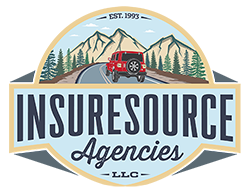Increasing your limits beyond what is mandatory by law is something you must consciously decide. Why would you want to? Why spend more money than you are required to? Here are three things to consider.
1. The limit of liability represents how much the company will pay the party you injured. Imagine their injuries exceed the amount of coverage you have. Who pays the extra? You do—out of your pocket, your bank account, your personal assets. You could lose everything because you didn’t select a liability limit high enough. Why would the other’s injuries cost so much? Have you considered the cost of an ambulance ride, surgery, and ongoing hospital care, especially if they require intensive care unit treatment? We’re talking thousands of dollars a day.
The limit you pick to cover others is also tied to how much you protect yourself and your passengers. It’s called uninsured/underinsured motorist bodily injury. Let’s say someone hits you but doesn’t have insurance, and they don’t have any assets to claim in a lawsuit. Your company will pay you for your injuries as if the at-fault party had coverage. Are your costs to recover after an accident any less than the one you might incur?
2. If you crash into someone’s property, let alone what injury you might cause them, how much will your insurance company pay for the damages? Property can be another car, truck, school bus, train, building, fence, or power pole. You get the picture. The law in Oregon says you must purchase at least $20,000 for property damage liability. Have you checked the prices of cars lately? A power pole costs approximately $50,000 to replace if it is severed, not to mention the loss of power to the customers the utility serves, which could lead to lawsuits for disruption. What if you rear-end someone? How much will it cost you for causing a chain reaction where you end up responsible for five automobiles?
3. Now is the hard part. With guidance from your agent, you must decide how much coverage you should have and balance it with what you can afford. Doubling your limits doesn’t mean doubling the cost. You may want to consider opting for a higher deductible on your collision coverage to afford purchasing higher liability coverage. Consider your driving habits. If you drive long distances and are always in a hurry, your driving record might reflect your tendency toward tickets and accidents. You may be especially prone to accidents, particularly severe ones. Higher limits might suit you best. If you rarely drive and are always cautious, you might be able to get away with lower limits. Maybe you are on a fixed income and can’t afford higher than the minimum limits. Your agent will help you explore all these possibilities.
